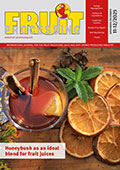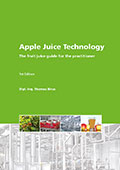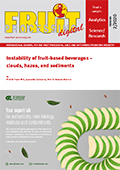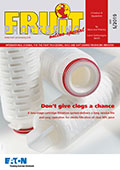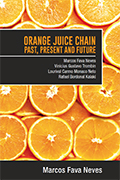Latest industry data on glass recycling show that the average glass recycling rate in the EU28 is steady at 74 %. This means that over 11.6 million tons of glass bottles are collected, and recycled into food grade quality material for the production of new glass containers.
Countries such as Belgium, Slovenia or Sweden, with excellent separate collection systems, continue to outperform beyond 95 %. While glass stands alone as the most circular packaging solution, maintaining permanent quality even when recycled, the reality is that there is still an important collection gap to fill in many EU countries.
“Our industry is mobilized to fill the gap to 100 % EU glass recycling because recycled glass is our most important raw material”, commented Adeline Farrelly, FEVE Secretary General. “We hope the new packaging recycling targets will give the necessary boost to all EU countries to invest in closed loop glass collection.”
As pointed out at the Euractiv Event, real recycling is a balancing act between developing materials that are recyclable, and markets that are open to use recycled material. “More and more effort is being put at European level to use recycled material for new food packaging”, says Jean-Paul Judson, FEVE Public Affairs Manager. “Recycled glass is of food grade quality. It goes straight into new food or beverage containers. We want to engage with policymakers to make this model the reference”.
Tetra Pak has launched a suite of new packaging material effects, known as Tetra Pak® Artistry, to help food and beverage producers revitalise the look and feel of their products.
These effects help brands attract shoppers’ attention without the need for the manufacturer to switch to a new packaging format or invest in new equipment.
Charles Brand, Executive VP, Product Management and Commercial Operations at Tetra Pak said, “In a world where almost everything needs to be ‘personalisable’, we want to provide customers with something unique to help their brands rise above the noise and reach the shopper. The new suite of effects and expressions will help our customers enhance their brand at no additional investment, making it a cost-effective solution to their needs.”
Tetra Pak’s current offerings of packaging material effects include:
- Tetra Pak® Reflect: to incorporate holographic effects onto the package
- Tetra Pak® Metallized: to create a metallic effect
- Tetra Pak® Craft: to give the package the natural look of bare paperboard with wood fibres
More offerings are in the pipeline, including Tetra Pak® Sculpt, an embossed surface texture for an innovative consumer experience.
The whole range of effects will be available for the majority of Tetra Pak package formats and offered to customers worldwide.
On Planet Earth, two billion humans suffer from obesity and 800 million live on the edge of starvation. Meanwhile huge amounts of edible food are wasted, either in the supply chain up to the consumer or at home by that same consumer after purchase. International exhibition Anuga FoodTec and the packaging community have now joined forces to chart where existing packaging may help in limiting food waste and to define areas where future packaging innovations may be needed.
Two key events are the international conference “Fighting food waste together: how to open the potential of better packaging” (on 22 March 2018 in the morning at the Anuga FoodTec Forum Resource Efficiency) and the NVC Zero Food Waste Dinner (on 22 March 2018 in the evening at the famous maiBeck restaurant in the Cologne ancient City Centre).
Visitors to the Anuga FoodTec (20-23 March 2018) may express their support for the fight against food waste by folding and subsequently using their own promotional fighting food waste lunch box during their stay in Cologne. Food packaging is the activity of temporarily integrating an external function and food to enable the consumption of the food. Important functionalities of food packaging in the fight against food waste are displayed on the box. The fighting food waste lunch boxes are available for free at the stand of the NVC Packaging Centre, Boulevard B033.
Anuga FoodTec will also show how the dissemination of know-how on food packaging via education and training may be drastically improved. The novel NVC Live Online E-course Food Packaging removes the need to travel and facilitates global access for business students from any place with an adequate internet connection. Contrary to many ‘passive’ online courses, the Live Online method brings excellent learning results through live and experienced tutors, engaging business students in truly interactive, state-of-the-art lessons.
SIG and ProLeiT offer integrated solutions for smart and automated factories
SIG has partnered with ProLeiT, a leading provider of automation and process control systems, to co-create innovative manufacturing solutions for food, beverage and dairy producers.
SIG is one of the world’s leading solution providers for the food and beverage industry within the field of carton packs and filling technology, and with its new partnership with ProLeiT will be able to offer producers advanced production technology and integrated software solutions.
ProLeiT is an expert within the field of Manufacturing Execution Systems (MES), enabling manufacturers to automate and control their production processes. This new partnership will allow both companies to combine their expertise for the joint development of innovative MES products for the food and beverage industry.
SIG’s new strategic collaboration supports its commitment to build smarter, more automated plants as part of its Smart Factory segment. This solution-driven and value-added platform is helping SIG to deliver IoT-enabled systems and technical services that transform filling plants into connected factories securing the highest efficiency, flexibility and quality.
The Coca-Cola Company announced that it is fundamentally reshaping its approach to packaging, with a global goal to help collect and recycle the equivalent of 100 % of its packaging by 2030.
This goal is the centerpiece of the Company’s new packaging vision for a World Without Waste, which the Coca-Cola system intends to back with a multi-year investment that includes ongoing work to make packaging 100 % recyclable. This begins with the understanding that food and beverage containers are an important part of people’s modern lives but that there is much more to be done to reduce packaging waste globally.
“The world has a packaging problem – and, like all companies, we have a responsibility to help solve it,” said James Quincey, President and CEO of The Coca-Cola Company. “Through our World Without Waste vision, we are investing in our planet and our packaging to help make this problem a thing of the past.”
The Company and its bottling partners are pursuing several key goals:
- Investing in the planet: By 2030, for every bottle or can the Coca-Cola system sells globally, we aim to help take one back so it has more than one life. The Company is investing its marketing dollars and skills behind this 100 % collection goal to help people understand what, how and where to recycle. We will support collection of packaging across the industry, including bottles and cans from other companies. The Coca-Cola system will work with local communities, industry partners, our customers, and consumers to help address issues like packaging litter and marine debris.
- Investing in packaging: To achieve its collection goal, The Coca-Cola Company is continuing to work toward making all of its packaging 100 % recyclable globally. The Company is building better bottles, whether through more recycled content, by developing plant-based resins, or by reducing the amount of plastic in each container. By 2030, the Coca-Cola system also aims to make bottles with an average of 50 % recycled content. The goal is to set a new global standard for beverage packaging. Currently, the majority of the Company’s packaging is recyclable.
World Without Waste is the next step in the Company’s ongoing sustainability efforts, building off success in replenishing an estimated 100 % of the water it uses in its final beverages. The Company achieved and exceeded its water replenishment goal in 2015, five years ahead of expectations. These efforts are part of the Company’s larger strategy to grow with conscience, by becoming a total beverage company that grows the right way.
“Bottles and cans shouldn’t harm our planet, and a litter-free world is possible,” Quincey said. “Companies like ours must be leaders. Consumers around the world care about our planet, and they want and expect companies to take action. That’s exactly what we’re going to do, and we invite others to join us on this critical journey.”
Strong production growth in 2016 represents a significant increase above the historic average growth rates for glass packaging
Glass packaging production in Europe grew by 2.9 % in volume (Tonnes) and by 2.1 % in unit terms in 2016 according to data published today by the European Container Glass Federation (FEVE)(1). The growth was driven by exports as well as continued demand for glass packaging in food and beverage segments in Europe. A total volume of 20.9 million tonnes or 75.9 billion units were produced in Europe for the EU and international food and beverage markets.
“The buoyant demand for glass is a strong signal of trust from customers in our industry and in glass packaging to help brands stand out on the shelves both in the European market and internationally,” says FEVE President Johan Gorter.
The strong performance in 2016 confirms the steady trend of the last 5 years. Since 2012, the industry has increased its production by 5.8 % in volume and 6.1 per cent in units.
Glass continues to be the reference packaging material for leading markets such as spirits, wines and beer, while it is increasingly gaining share in the food, water and dairy sectors. This is not only due to new consumption trends for local, organic and natural food, but also because of the positive image of glass packaging and the strong consumer trust in glass as their preferred packaging for environmental, health and taste preservation reasons. According to a recent survey(2), glass is consumers’ favourite packaging, with 1 in 2 Europeans saying they use more glass than three years ago and 75 % of Europeans view glass as the most environmentally friendly packaging.
“It is encouraging that consumers trust glass because of its sustainability credentials and because it best preserves the quality of their preferred products. As an industry, we are committed to making the inherent properties of glass more visible to our customers and to the final consumer” continues Johan Gorter.
(1)Production of container glass for food and beverages in the EU, Switzerland and Turkey based on direct industry production data from FEVE member companies compiled by Vivid Economics for FEVE.
(2)InSites Research 2016. View Summary report on the Friends of Glass platform.



